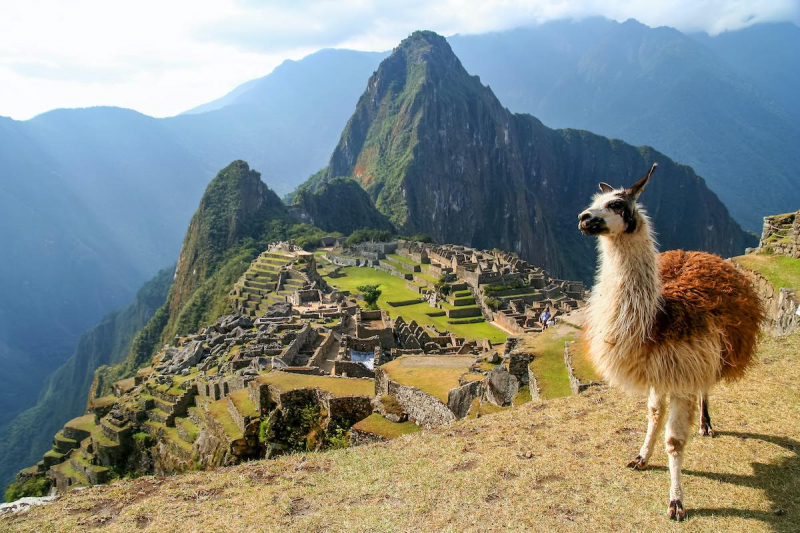Machu Picchu

Machu Picchu is a 15th-century Inca citadel located in southern Peru on a 2,430-meter mountain range. Most recent archaeologists believe that Machu Picchu was constructed as an estate for the Inca emperor Pachacuti (1438–1472). Often referred to as the "Lost City of the Incas", it is the most familiar icon of the Inca civilization. The Incas built the estate around 1450 but abandoned it a century later, at the time of the Spanish conquest. Historical research published in 2022 claims that the site was probably called Huayna Picchu by the Inca, as it exists on the smaller peak of the same name.
Machu Picchu was built in the classical Inca style, with polished dry-stone walls. Its three primary structures are the Intihuatana, the Temple of the Sun, and the Room of the Three Windows. Most of the outlying buildings have been reconstructed in order to give visitors a better idea of how they originally appeared. Moreover, the Incas, in contrast to the Maya, had no written language, and no European visited the site until the 19th century, so far as is known. There are, therefore, no written records of the site while it was in use. The names of the buildings, their supposed uses, and their inhabitants are all the product of modern archeologists, on the basis of physical evidence, including tombs at the site.
People often think of Machu Picchu as a ruins historic site, but there's actually a modern town of Machu Picchu that is located just below the ruins, along the Urubamba river. The town is also known as Aguas Calientes (hot springs), with a post office, a train station, many inexpensive and some expensive hotels, and other services for the many tourists. There is even a luxury hotel on the mountain, near the ruins.
Speaking of Machu Picchu, we can not ignore the human sacrifice practice and mysticism of this place. There is little information describing human sacrifices at Machu Picchu, though many sacrifices were never given a proper burial, and their skeletal remains succumbed to the elements. However, there is evidence that retainers were sacrificed to accompany a deceased noble in the afterlife. Animal, liquid, and dirt sacrifices to the gods were more common, made at the Altar of the Condor. The tradition is believed to be upheld by members of the New Age Andean religion.
Official name: Machu Picchu, Historic Sanctuary of Machu Picchu
Situated in: Peru
Built in: Around 1450 - 1460
Built by: Incan Empire
Designated by UNESCO: 1983







